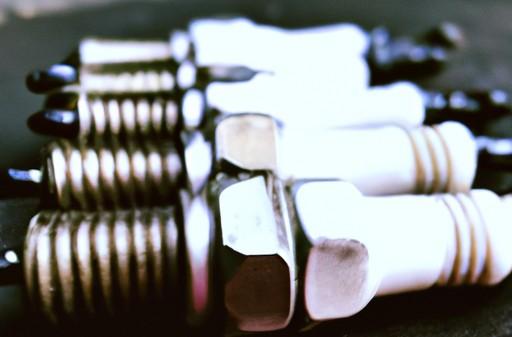Spark plugs are nothing without solid and better plug wires. But these wires are prone to damage by excessive engine heat. As a result, you need to change the wires frequently which costs you more. But if you know the exact process of how to protect spark plug wire from headers, you can minimize the risks and costs.
There are several effective and well-known ways to protect these wires from melting or burning from the engine header. However, among them, insulation around the wires is the most effective and long-term solution. Besides, a heat shield works better here to prevent heat.
You may wonder how you do this. No worries. All the procedures and detailed discussions will be organized in this article. So don’t stare here and there, stick to this article and get the solution in detail. Moreover, there will be other information you need to know as well.
Effective Ways to Protect Spark Plugs Wires from Header

After going through extensive driving for a long time, it’s usual to overheat the engine header. As a result, the adjacent spark plugs wire burns easily. If you don’t know how to protect spark plug wires from burning, use the following methods.
Use Fiberglass Socks
The most common yet feasible way to keep the spark plug wire from melting. They are made of silicone which has the least thermal conductivity. What does it mean? It means the heat transfer through the socks sluggishly, which in turn resists extreme heat according to NES, an Integrated Polymer Solutions Company.
This way, it can repel the extreme temperature incredibly. After installing these socks, you won’t need to worry about extreme heat. Indeed, you don’t need to worry about the wires burning. If you face trouble choosing the best fiberglass socks, choose Fiberglass E Sock. As well as withstanding 1200 °F, it prevents serious damage caused by external heat.
Use Header Wrap
Header wrapping and DEI plug boot protectors will work efficiently. Header wrap perfectly wraps the wire around to handle extreme heat. However, if your engine gets too hot even after a little ride, this header wrap withstands the heat coming from the exhaust.
The gap between the engine header and header wrap is extended, so there is no chance to melt the wires down. In addition, it can reduce underside temperature by more than 70%, resulting in increasing HP and Fuel efficiency. To get the best results, choose Titanium header wrap.
Adhesive Tape Works Well
If you find that duct tape or insulative tape work less or even doesn’t make any sense, use adhesive tape. It’s a sure and handy way to protect sparker wires from melting or burning, caused by the high heat or header.
Before adding the adhesive tape over the wires, make sure you place the spacer or the plastic cap bottom of the wire. It extends the space between the wire and the header.
Meanwhile, it provides less arch towards the ground. Remember adhesive tap only works to separate the header and wires appropriately. It is foolish to expect any other advantages by putting in electric or insulating taps.
Heat Shields or Heat Protection Boots
The heat shield is effective in keeping the inner materials from internal or external heat. When it comes to the sparker wires, it restricts the heat from reaching the cables.
This is another timely approach that many users recommend as an excellent solution. It is also made of stainless steel similar to other ceramic insulative components. It works as a thermal barrier that stands against high heat. There is a variation in heat shield materials to choose from. You can choose a flexible heat shield.
Apart from preventing the wire from excessive heat, you feel improved performance till the end. Choosing heat shields for the detonator wires from HP(heatshield Products) will last longer and are very effective.
Insulation around the Wires
Another praiseworthy and cost-saving method to keep spark plugs from melting is using insulative boot protectors. Usually, these insulated boot protectors are made of high heat-barrier materials. Hence, they are capable of reflecting extreme heat ranging from 650℃ to 980℃ or 1200 ℉ to 1800 ℉.
So this is a huge range of heat that will be produced by the engine too little. In addition, they are cylindrical and perfectly attached to the spark plug wire’s cylinder heads.
Luckily, with this optimal heat-resistant capability, the price wonders you a lot. The price is really low without compromising the quality. If you want the best insulative protective boots, you can choose ShineHome’s insulated boots. With its advanced head layer technology, it can effectively resist heat.
Heat-resistant Boots
Heat-protective boots work almost similarly compared to insulative protective boots. The only difference is their materials. They are equipped with ceramic insulation and rust-proof parts.
Surprisingly, heat-protective barriers are also capable of tolerating more than 1800 ℉. These boots reflect the heat to protect the spark plug wires from severe heat. Most importantly, the length of each boot is 6” which withstands excessive heat.
One of the most flameproof and extremely heat-resistant wire boot protectors is the Titanium wire boot protector. It withstands a minimum of 2.5k degrees Fahrenheit.
Regular Maintenance
Regular maintenance is a key aspect of keeping your entire system workable. From sparker wires to the engine, every component inside and outside the vehicle should be cross-checked every now and then. Spark plugs are directly connected to the engine performance.
In the meantime, spark plug wires play a crucial role in making the plugs efficient. However, If there are any inconveniences in wires, spark plugs do nothing to provide a better spark to ignite and produce combustion. So you should maintain the wires regularly.
Also, remember to keep any edges out of the header because they absorb heat from the surroundings.
Use Zip Ties
Any fire hazard is nothing to the zip ties. They can efficiently handle bulk heat. Also, they resist any component contacting a hot surface. If you really want to keep the internal component away from the exhaust heat, especially the detonator’s wires, you can try to make a shield with zip ties.
Another fruitful approach is using insulation sleeves that hide the cable. They come in handy in keeping the engine cool and running smoothly.
Padding Works Well
Using a pad or tapping the wires with electrical tape will work. Padding will be a cost-saving approach to protect the closing wires to the engine from melting.
Lava Boot Shield
Like insulating boots, it works fine but differs from the built materials. High-temperature basalt materials make the Lava boot shield unique compared to other methods. Also, they are flexible and withstand 1200 ℉ and intermit at least 2000℉.
Reasons Why Spark Plug Wires Melt from Engine Header
The Spark plug cable can be burned or melted for various reasons. If you know the exact reasons, you can save further wire damage efficiently. Below are some primary reasons that affect the plug wires.
- Too High Engine Temperature: When you drive your car for a long time, it’s typical to get the engine hotter. Engine overheats for several reasons including leaky cooling system, clogged hoses, worn-out water pumps, etc. So if you want to reduce the overheating of the engine overheat, first, take steps against them.
- The header is too Hot: Another intriguing cause for this issue is the hot header. If the engine gets hot, there is a sure chance of overheating the engine header. As a result, the wire melted down quickly.
- Additional Edges: These occur mostly when the spark plug wires are misaligned or wrongly positioned. Also, this may happen for wiring the wire too close to the engine heads. This causes the wire layers damage. In addition, additional edges absorb the heat from the vicinity of the spark plugs. In this case, you should replace the wires or cover the wire with electrical tape.
Conclusion
Spark plug wires are crucial components that contribute to igniting and making better combustion. Unfortunately, these components are prone to melt down quickly but to the extreme engine header heat. If you are tired of changing the spark plug wires frequently, you must take instant action to reduce costs.
Over time, you may notice the wires melting down by the extreme engine herder’s heat. It happens for multiple reasons including the wire placed adjacent to the header, extra edges between the headers and spark plug wires, etc. Frequency, wire burning causes great losses which should be controlled with a safe hand.
This article is all about the process of how to protect spark plug wires from the header. Hopefully, you’ll keep the wires from burning following the above cheapest yet most fruitful methods and materials.

